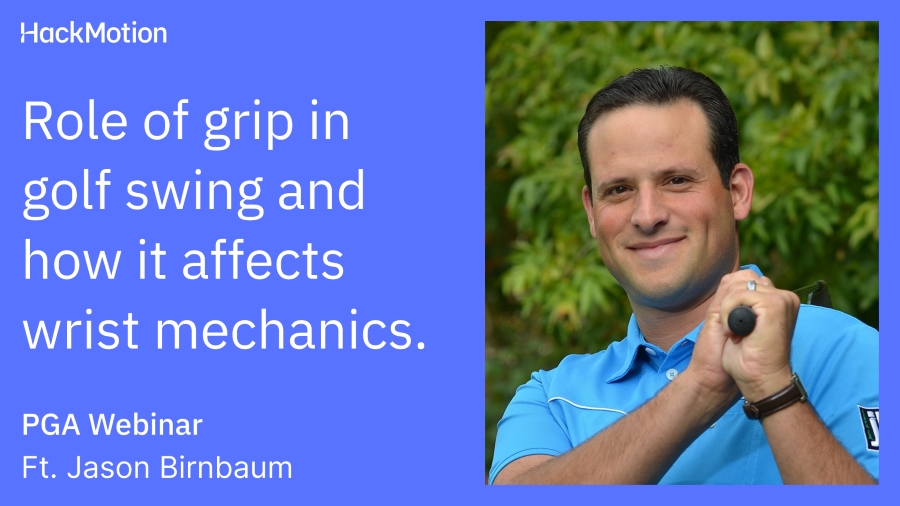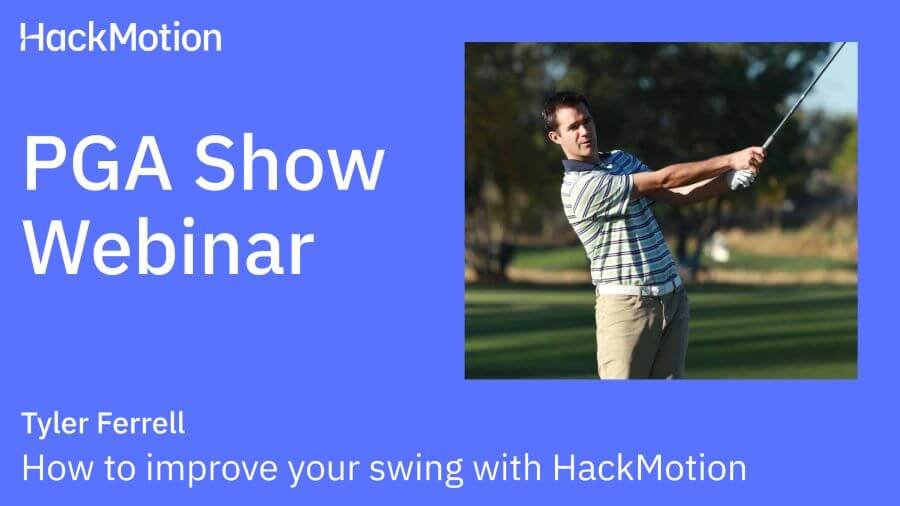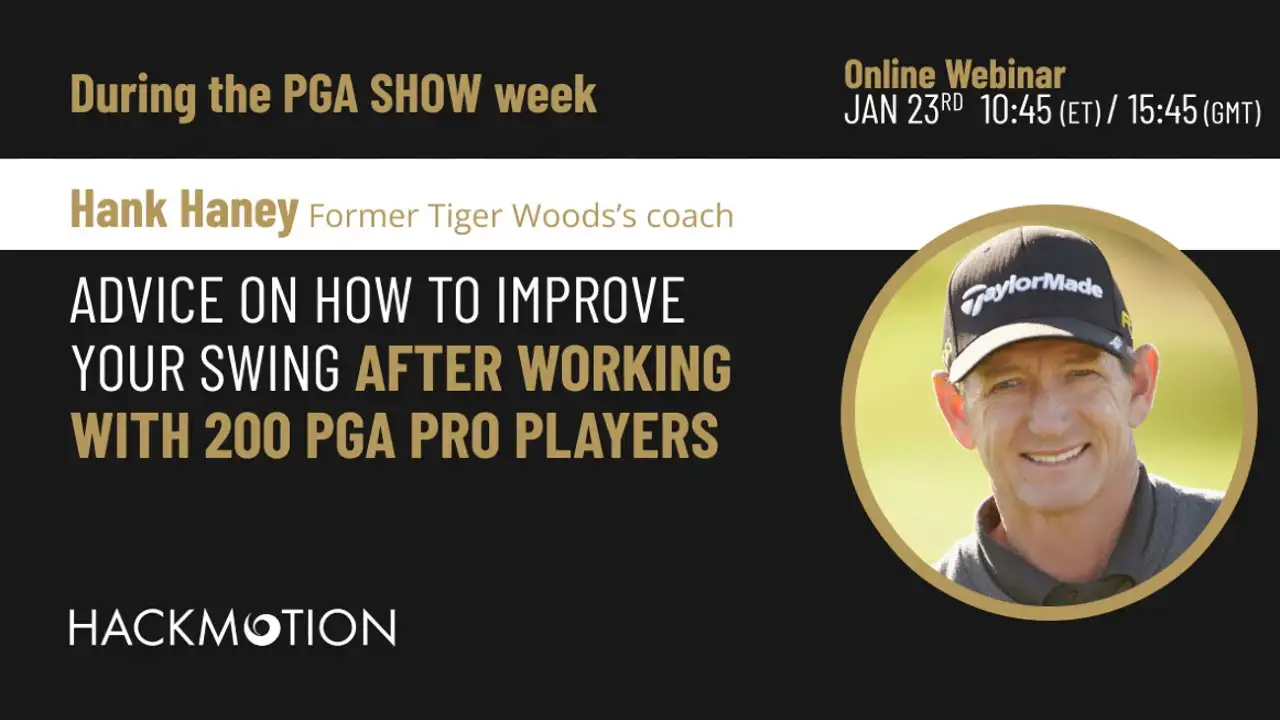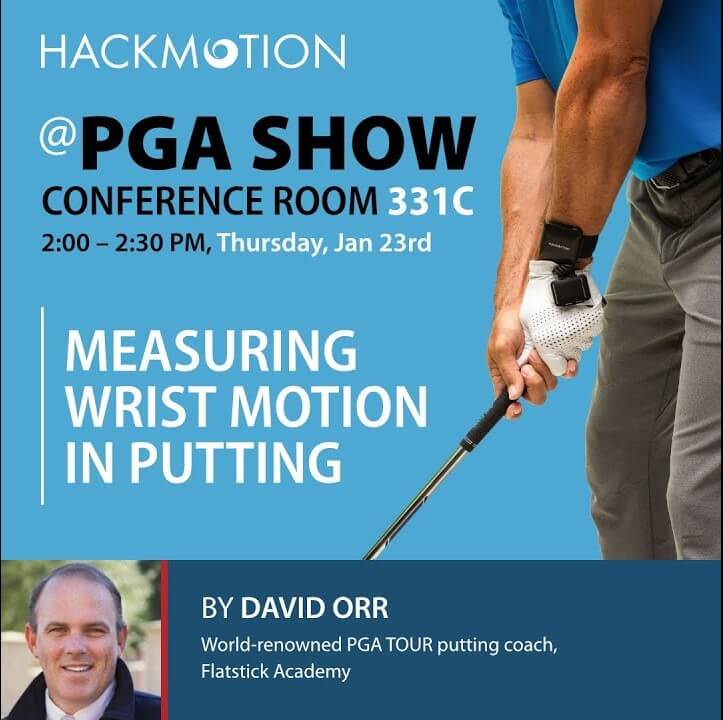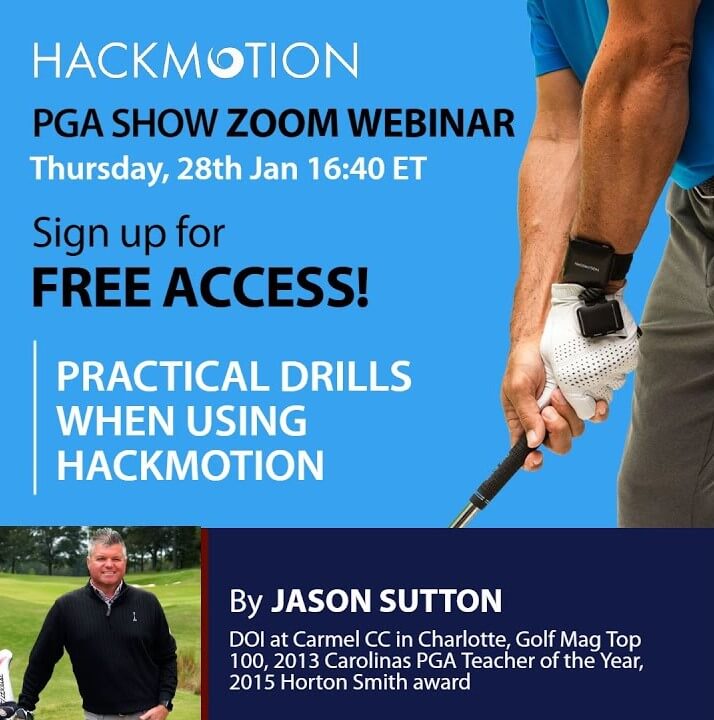The Ideal Wrist Positions in Golf: Insights from Tyler Ferrell’s HackMotion Webinar
As part of our HackMotion webinar, coach Tyler Ferrell gave a presentation on using the wrists in the golf swing. Tyler breaks the swing down into different components to make this process easier and more understandable.
Key Takeaways
- At setup, with a neutral grip, the ideal wrist position extension range should be between 10 and 25 degrees. Less extension would indicate a weak grip, while more would be strong.
- More important than grip position is grip strength consistency; using a neutral grip more often than not is best.
- At impact, the goal is to be 15 to 30 degrees more flexed than at the start; without this movement, flipping becomes a problem.
- Focus on the 9 to 3 drill (halfway back to halfway through) to determine the root cause of your wrist issues at impact.
- Being too extended at the top of the swing should be avoided; look for +5 to -10 degrees from the setup position.
- Problems in the takeaway, like adding extension as the first move, an early hinge, or an upper body sway, will lead to poor wrist action and more inconsistency in the golf swing.
Wrist Position Goals at Setup
If you aren’t putting yourself in a good position to start your swing, it becomes very difficult to get your golf game to the next level.
Tyler brings up an interesting point about ensuring that the amount of grip extension is not the only thing we focus on at setup. In addition, you’ll need to look at how your grip matches your sternum or body position.
Grip strength consistency can be tested with the HackMotion. Go through a practice session and pay close attention to the starting position of the lead wrist. Is it changing often?

Proper Impact Position for Consistent Ball Striking
The goal is to be 15 to 30 degrees more flexed at impact than you are at the start of your golf swing. Many golfers who struggle to get to the proper position at impact tend to have too much extension at setup.
This leads to a flip, which is usually caused by getting into a flexed position and then losing it (usually because of poor body rotation or movement) and never getting enough flexion, sometimes from too much grip pressure.
Test to See where Your Wrist Issues are
Tyler mentions a great test to see why your wrist may not be in the correct position at impact.
Take a half swing from 9 to 3 and see if you are able to square the clubface and get to that flexed lead wrist position. Wear your HackMotion as you see how your wrist action changes from a full swing to this half swing.
- If you can do it on the halfswing, you know your backswing is the issue.
- If you can’t do it, your brain just doesn’t know how to deliver the club in the proper position just yet (you’ll need to work on release training and hitting more with your body and less with your hands).
Spatula Drill for Face Direction
If you need a better visual of what your golf club face should look like through impact, you can use a spatula. Hold a spatula like a golf club, and adjust grip strength and wrist position (flexion/extension) to simulate changes in the club’s face.
This is done to help understand the relationship between grip, wrist action, and clubface direction. If you can learn how to do it with a spatula, move to the golf club and see if you have better control over the face orientation.
What will Improve Your Impact Position the Fastest?
Tyler talks about the different things you can work on in your golf game to start to improve the impact position. One of the most important things to work on is body movement, and especially the takeaway.
The goal at the top of the backswing is to ensure you are within range of where you were at setup. This usually means you are swinging with the body and pivoting correctly.
In addition, pay close attention to take away problems known to lead to poor wrist action. Using arms too much, adding extension as the first move, an early hinge, and too much flexion too soon will all be the root causes of these issues.
Final Thoughts
Take a look at the entire webinar from Tyler and go through some of the Q&A to see if there is a particular question or player profile that relates to your swing.
The great thing about the data that HackMotion can collect for us is that it’s actionable and something that you can continue to work on at your own pace.




